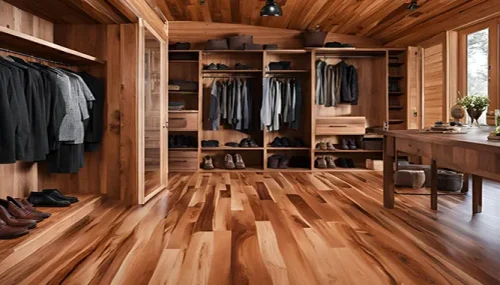Cedar flooring is a popular choice for homeowners seeking a blend of natural beauty and durability. Known for its distinctive appearance and pleasant aroma, cedar wood has a lot to offer. However, like any flooring material, it comes with its own set of advantages and disadvantages. This article will explore the pros and cons of cedar flooring to help you determine if it’s the right choice for your home.
Pros of Cedar Flooring
1. Aesthetic Appeal
Cedar flooring is renowned for its rich, warm tones and unique grain patterns. The wood ranges from light honey hues to deep reddish-brown, adding a natural elegance and cozy ambiance to any space. Cedar’s visual appeal can complement both traditional and modern interior designs.
2. Natural Aroma
One of cedar’s standout features is its natural, pleasant aroma. The scent of cedar can lend a refreshing, inviting atmosphere to your home and has been known to repel insects, including moths and termites, making it a practical choice for areas prone to pests.
3. Durability and Resilience
Cedar is relatively soft compared to other hardwoods, but it still offers good durability for residential use. It’s resistant to warping and splitting, thanks to its natural oils. These oils also provide a degree of water resistance, making cedar a suitable option for areas with moderate moisture exposure, like bathrooms and kitchens.
4. Lightweight Nature
Cedar is a lightweight wood compared to other hardwoods. This makes it easier to handle during installation and less likely to strain structural supports. Its light weight also contributes to a faster installation process.
5. Eco-Friendly
Cedar is considered an environmentally friendly flooring option. It’s a renewable resource, and many cedar products come from sustainably managed forests. Additionally, cedar’s natural properties mean it often requires fewer chemicals in treatment and finishing processes.
Cons of Cedar Flooring
1. Softness and Scratch Susceptibility
Cedar is softer than many other hardwoods, which means it’s more prone to scratches, dents, and wear over time. This can be a significant drawback in high-traffic areas or households with pets and children. Regular maintenance and protective measures are necessary to keep cedar floors looking their best.
2. Color Variation
While the natural color variation of cedar can be attractive, it may also be a drawback for those seeking a more uniform appearance. Cedar’s color can change over time due to exposure to sunlight and air, leading to a patina that might not suit everyone’s aesthetic preferences.
3. Cost Considerations
Cedar flooring can be more expensive than some other types of wood flooring. The cost can vary depending on the grade of cedar, the region, and the availability of the material. Additionally, ongoing maintenance costs may add to the overall expense of cedar flooring.
4. Maintenance Requirements
Cedar requires regular maintenance to preserve its appearance and durability. This includes periodic sealing and conditioning to protect against moisture and damage. Without proper care, cedar floors can lose their luster and become more susceptible to wear and tear.
5. Limited Hardness
The relatively soft nature of cedar compared to other hardwoods means it may not be the best choice for high-impact areas like entryways or heavy-use spaces. It’s essential to consider how cedar will hold up in different areas of your home.
Basically, cedar flooring offers a unique combination of beauty, durability, and environmental benefits, making it a compelling choice for many homeowners. Its distinctive look and natural aroma can enhance the ambiance of your home, while its lightweight nature and eco-friendliness are additional advantages. However, its softness, color variability, and maintenance requirements are important factors to weigh when making your decision.
When considering cedar flooring, it’s crucial to assess your lifestyle, budget, and maintenance preferences. By carefully evaluating the pros and cons, you can make an informed choice that aligns with your needs and enhances the charm of your home.

